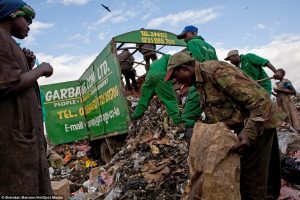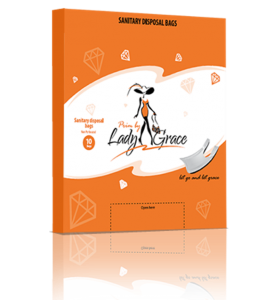Sanitary waste disposal suffers a great deal in urban households, where sanitary bins are largely absent. These households dispose of the waste, in garbage bins together with kitchen and other inorganic house waste. But how safe is this? Soiled napkins and diapers carry body fluids and waste, otherwise termed as biomedical-pathological waste, despite their continual treatment as municipal waste.
Waste nature
In Kenya sanitary waste is uncategorized. Its neither classified as biomedical nor Plastic waste but is treated as municipal waste. NEMA’s (National waste management strategy 2014), definition of various types of waste and their management practices has been clearly defined. According to the strategy document, domestic waste includes kitchen waste, green paper waste and non-biodegradable such as plastics, glass bottles, cans, metals, and wrappings. On the other hand, biomedical waste is defined as waste generated from health facilities, research institutions or during immunization of human beings and animals. Classified as: infectious, sharps, pharmaceutical wastes, chemical waste, and pathological waste. Sanitary waste is biomedical but its disposal strategies are those of municipal waste. This is a clear indication that sanitary waste has been swept under the rugs.
Disposal strategy
From the top of the supply chain, a lack of clear disposal packaging means couples the neglect. This sees most girls and women dispose of the waste openly, with the considerate ones wrapping the waste in newspapers, paper bags, or the product packaging. These wrappings, however, can only grip for a while. Unraveled and poorly disposed of sanitary waste poses an infection risk to waste collectors.
Safe disposal of waste means ensuring that the process of destruction of the soiled materials is undertaken without human contact and with minimal environmental pollution. Lack of effective waste disposal has serious effects that are mostly surpassed.

Unorganized waste collection, transportation networks, and disposal of municipal waste further worsen the situation. Most trucks and “mikokoteni” used in the informal waste collection are open and unfit, compounded with poor roads that characterize pathways to dumpsites, hence a big volume of waste end up in roadsides rather than the designated landfills.
Moreover, lack of waste collection fee in informal settlements, see them dispose of waste along with road reserves, unutilized land, river streams, and sewer lines. Disposable sanitary napkins and diapers constitute superabsorbent polymers, that easily absorbs water, bloat and eventually blocks the drainages and sewer lines. Unclogging of the sewage systems has predominately been left to divers, who do it without protective gears, despite the waste being a potential harbor of pathogens.
Restoring the beauty -disposal pouches

Wangechi Kamau at the age of 25 years had identified the gap. She wanted a changed in the way women disposed of their soiled napkins. Out of research, she established that sanitary waste led to the eye, respiratory and skin infections to cleaners who clean women lavatories without masks and gloves. Seeing the thoughtless way in which the waste was disposed of, she was innovative enough and decided to offer a solution- a sanitary disposal bag, dubbed Lady Grace. The bag enables women to stash their used napkins and hygienically dispose of them.
This has a number of benefits such as masking the odour and reducing human contact with the waste. Great thought for the Kenyan woman, right? However, How do we get there? Its high time the Sanitary napkins manufacturers’ and brand owners danced into the tune, and embed clearly marked pouches or suitable wrapping material, along with their products. The mark-red dot- on the pouches should easily identifiable to waste collectors to ease sorting and reduce human contact.



